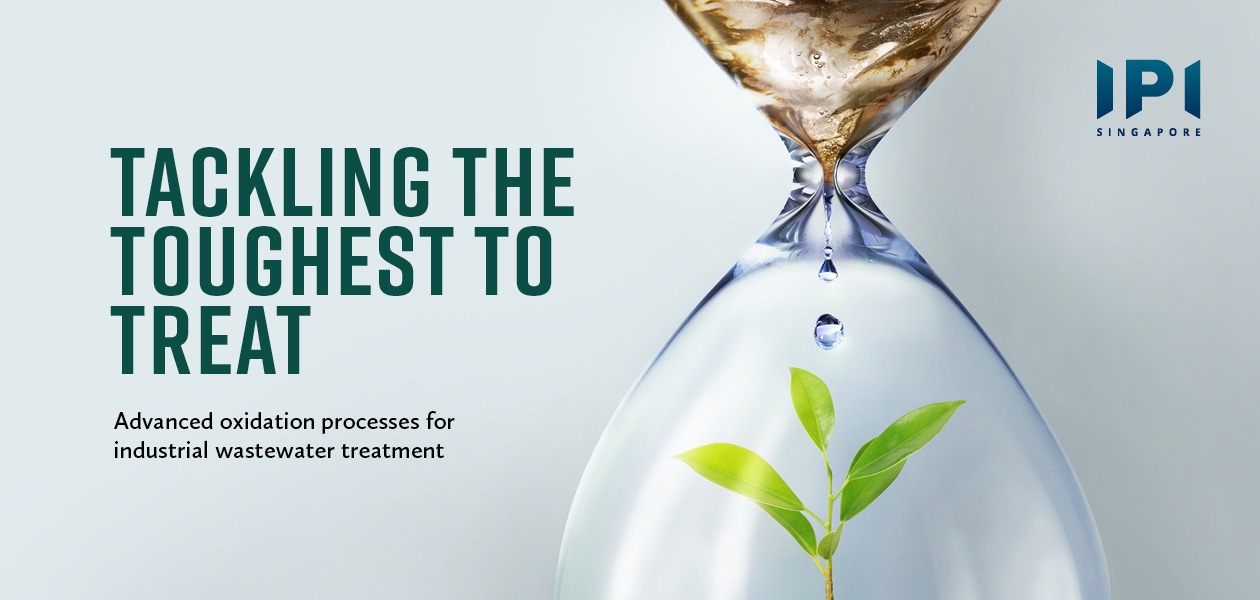The flood of industrial wastewater generated in recent decades has led to new and improved wastewater treatment technologies. Download our white papers to find out more.
There are few resources more fundamental to humanity than the one that makes up 60 percent of our bodies. Water sustains not just life, but our societies and industries as well. Accordingly, our thirst for it has grown rapidly over the past decades. Today, the world collectively consumes around four trillion cubic metres of fresh water a year. Of this usage, around one fifth is channelled to our industries.
Water used in industrial processes typically ends up contaminated with a mix of pollutants, making it unsafe for reuse or even environmental discharge. Common contaminants include heavy metals, strong acids and even biohazardous substances. In recent decades, governments around the world have become more aware of the havoc these pollutants wreak on our environment and are imposing harsher discharge requirements. The heavier penalties, coupled with rising environmental awareness among consumers, are compelling more and more companies to invest in the reuse and recycling of industrial wastewater.
This rising demand for wastewater treatment has correspondingly resulted in a wave of innovations in treatment technologies. In Sustainable Industrial Wastewater Management and Tackling the Toughest to Treat white papers by IPI, we respectively highlight the opportunities and challenges involved in building sustainable wastewater treatment plants, and promising new technologies that can handle highly complex and contaminated industrial wastewater.
Tech novelty and operational maturity
Compared with domestic wastewater, industrial wastewater typically contains higher levels of recalcitrant pollutants, making advanced treatment methods necessary. One of the more established technologies currently available are advanced oxidation processes (AOP).
In recent years, demand for advanced treatment methods has birthed novel inventions within the AOP field. Unlike conventional AOP methods, these emerging technologies focus on treating specific organics in wastewater from different industrial activities. Many of the new methods, featured in our Tackling the Toughest to Treat white paper, are cheaper and greener options for incineration and have proven highly effective in a range of industries.
The scientific technicalities involved in advanced treatment processes, coupled with the human factor considerations necessary to ensure the smooth operation of each plant, require technology experts to have both a scientific understanding of the processes behind treatment methods, and a social understanding of how factories are operated. We explore how they navigate these constraints using case studies in our Sustainable Industrial Wastewater Management white paper.
Nor any drop to drink
Despite slowdowns in specific sectors brought about by the COVID-19 pandemic, we expect to see a rise in the volume of industrial wastewater generated in the coming years. Two of the top wastewater-producing industries, pharmaceuticals and paper, have grown rapidly since the pandemic began. Other key areas, including petrochemicals and textiles, are set to continue expanding, driven by demand in large markets including India and China.
The increase in industrial wastewater generated, coupled with steady population growth and rising domestic demand, will continue to put pressure on our finite supply of this life-sustaining liquid. By 2025, up to two-thirds of the world’s population may face water shortages, according to research and policy projections. Governments and consumers worldwide are increasingly conscious of this reality, with an accompanying shift in investor mindset towards sustainable environmental, social and corporate governance.
This rising tide of environmental awareness across all industries will continue to shape wastewater production and management strategies. Companies are already beginning to see sustainable water practices as more than a mandatory response to increasing regulatory and consumer pressures, acknowledging that better resource management often brings business benefits. For instance, wastewater contains fertilisers, rare earth metals and other useful substances, all of which can be reused or sold to offset costs. As more companies look to invest in treatment processes, demand for sustainable wastewater treatment plants that utilise new technologies to reuse and recycle highly complex and contaminated industrial wastewater will only grow.
Collaborate to seize opportunities
Today, improved valorisation techniques mean wastewater is no longer seen as a by-product to be disposed of, but a valuable resource to be tapped. In navigating the variety of industrial wastewater treatment technologies in the market, companies can consult experts with deep technical knowledge and operational experience. In doing so, they can design and build sustainable wastewater treatment plants that utilise the most promising technologies available to best cater to their particular wastewater management needs.
Businesses eager to utilise more advanced wastewater treatment processes such as AOP can also fast-track their progress by collaborating with existing technology providers, rather than reinventing the wheel. To find out more about the AOP technology providers you can tap on, or further understand the opportunities and challenges involved in sustainable plant design, download both our white papers below.



